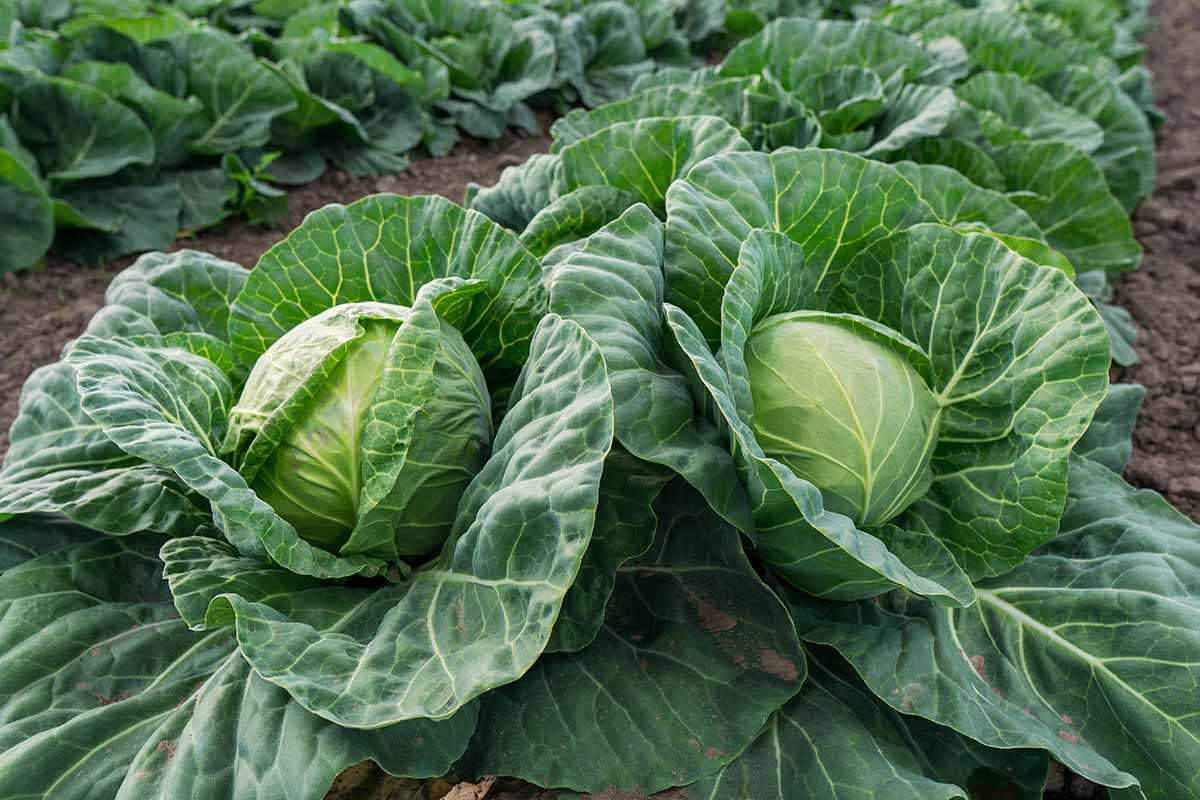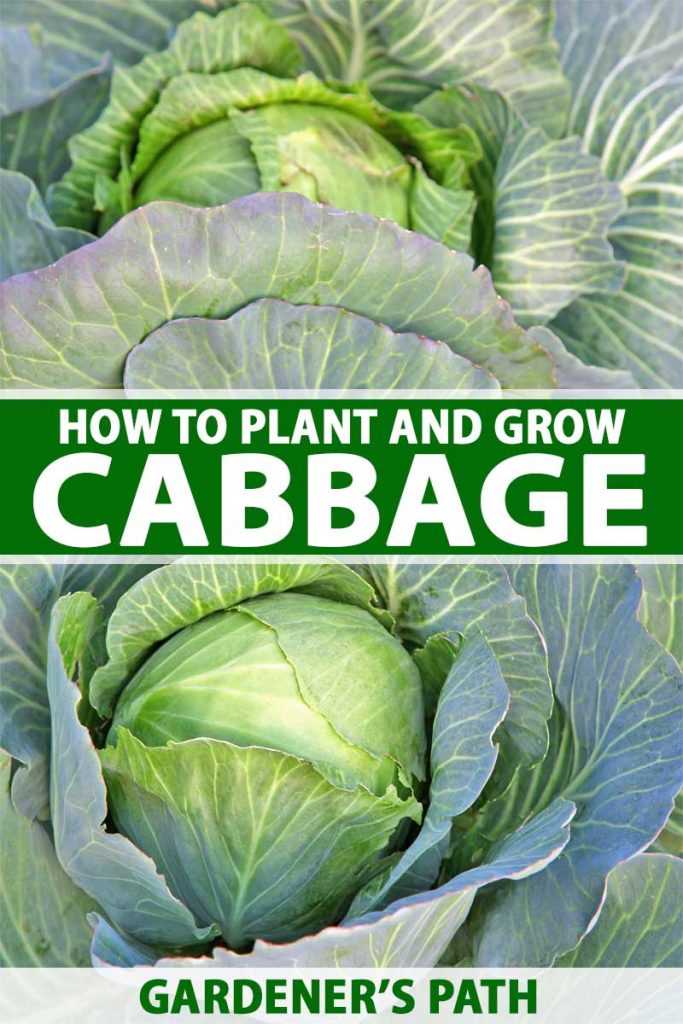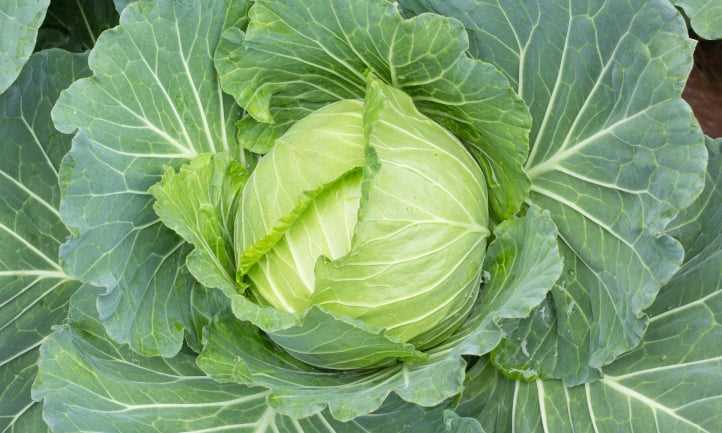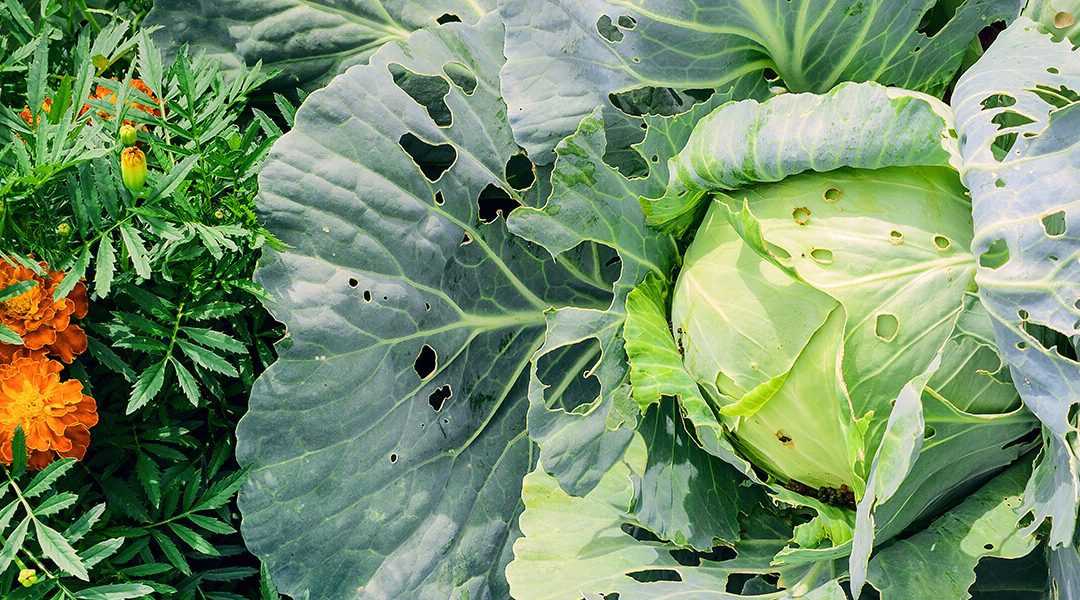- Should You Prune Cabbage Leaves?
- Benefits of Pruning Cabbage Leaves
- Considerations Before Pruning Cabbage Leaves
- Common Mistakes When Pruning Cabbage Leaves
- In conclusion
- Understanding the Importance
- Common Mistakes Gardeners Make
- Benefits of Pruning Cabbage Leaves
- When to Prune Cabbage Leaves
- Early Stage Pruning
- Middle Stage Pruning
- Late Stage Pruning
- Proper Techniques for Pruning
- How Pruning Affects Cabbage Growth
- Benefits of Pruning Cabbage Leaves
- Potential Negative Effects of Pruning Cabbage Leaves
- Tips for Pruning Cabbage Leaves
- Tips for Pruning Cabbage Leaves
- 1. Know when to prune
- 2. Prune selectively
- 3. Use clean and sharp tools
- 4. Prune at the right time of day
- 5. Properly dispose of pruned leaves
- 6. Monitor for regrowth
- 7. Consider other methods
- 8. Seek advice
- “Question-Answer”
- Why do gardeners prune cabbage leaves?
- When is the best time to prune cabbage leaves?
- What are the common mistakes gardeners make when pruning cabbage leaves?
- How much should I prune from the cabbage plant?
- Can I eat the cabbage leaves that I prune?
- “Video” Three reasons why I trim cabbage leaves/South African YouTuber

Cabbage is a popular vegetable that is grown in many home gardens. The leaves of the cabbage plant play an important role in its growth and development. However, some gardeners may wonder if they should prune the cabbage leaves to promote better growth or improve the appearance of the plant. In this article, we will discuss whether pruning cabbage leaves is necessary and common mistakes that gardeners make when pruning.
Pruning cabbage leaves is not necessary for the plant’s growth. In fact, cabbage plants need their leaves to absorb sunlight and convert it into energy through photosynthesis. Removing leaves can disrupt this process and hinder the plant’s ability to grow and produce a harvest. The leaves also serve as protection for the cabbage head, shielding it from excessive heat and cold.
One common mistake that gardeners make when pruning cabbage leaves is removing too many at once. While it may seem like removing a few leaves will allow the plant to focus its energy on the remaining leaves and head, it can actually weaken the plant. Removing too many leaves can put stress on the plant and make it more susceptible to pests and diseases. It is best to leave the majority of the cabbage leaves intact and only remove any damaged or diseased leaves.
Another mistake that gardeners make is pruning cabbage leaves too late in the growing season. As the cabbage plant matures, the inner leaves naturally begin to yellow and die off. While it may be tempting to remove these leaves to improve the appearance of the plant, it is best to leave them in place. These leaves continue to provide nutrients to the cabbage head as it matures. Pruning these leaves too early can result in a smaller and less flavorful harvest.
Overall, there is no need to prune cabbage leaves unless they are damaged or diseased. The leaves play a crucial role in the growth and development of the plant, and removing them can hinder its ability to produce a healthy harvest. Avoid common mistakes like removing too many leaves at once or pruning too late in the growing season. By following these guidelines, you can ensure that your cabbage plants thrive and provide you with a bountiful harvest.
Should You Prune Cabbage Leaves?
Pruning cabbage leaves is a common gardening practice that some gardeners swear by, while others avoid it altogether. The decision to prune cabbage leaves depends on various factors, including the specific variety of cabbage, the growth stage of the plant, and the desired outcome.
Benefits of Pruning Cabbage Leaves
1. Increased air circulation: By pruning cabbage leaves, you can improve the air circulation around the plant. This can help prevent diseases, such as powdery mildew, that thrive in humid environments.
2. Enhanced sunlight exposure: Pruning can also allow more sunlight to reach the lower leaves of the cabbage plant. Increased sunlight exposure can improve photosynthesis and promote healthier growth.
3. Thinning overcrowded plants: Pruning can be beneficial when cabbage plants are growing too close together. By removing excess leaves, you can create more space for each plant, allowing them to develop properly.
Considerations Before Pruning Cabbage Leaves
1. Type of cabbage: Not all cabbage varieties respond well to pruning. Some types, like savoy cabbage, have frilly leaves that are more delicate and prone to damage. It’s important to research the specific variety of cabbage you are growing to determine if pruning is suitable.
2. Growth stage: Pruning should be done carefully and at the right growth stage. It is generally recommended to wait until the cabbage plant has reached a certain size before starting to prune. Typically, this is when the outer leaves have fully expanded and the plant is well established.
Common Mistakes When Pruning Cabbage Leaves


1. Overpruning: Pruning too many leaves at once can stress the cabbage plant and hinder its growth. It’s essential to only remove a few leaves at a time, starting from the outermost and working inward.
2. Pruning too early: Pruning too early can stunt the growth of the cabbage plant. It’s important to wait until the plant is established and has enough leaves to support its growth.
3. Not sanitizing tools: When pruning cabbage leaves, it’s crucial to use clean and sanitized tools to prevent the spread of diseases. Tools should be disinfected before and after each use.
4. Removing healthy leaves: It’s important to differentiate between damaged or diseased leaves and healthy leaves. Removing healthy leaves can reduce the overall productivity of the cabbage plant.
In conclusion
Pruning cabbage leaves can have benefits when done correctly and at the right time. It can help improve air circulation, increase sunlight exposure, and thin overcrowded plants. However, it’s important to consider the specific variety of cabbage and the growth stage of the plant before pruning. Avoid common mistakes such as overpruning or pruning too early to ensure the best results for your cabbage plants.
Understanding the Importance
Pruning cabbage leaves is a common practice among gardeners, but it is important to understand the reasons behind this practice. Properly pruning cabbage leaves can have a positive impact on the health and productivity of your plants.
Promotes air circulation: Pruning cabbage leaves helps to improve air circulation within the plant. This is important because it reduces the risk of fungal diseases, such as powdery mildew, from developing. When leaves are too dense, they can trap moisture and prevent adequate airflow, creating a favorable environment for diseases to thrive.
Prevents overcrowding: Cabbage plants can quickly become crowded if the leaves are not pruned. Overcrowding can lead to stunted growth and reduced yields. By removing some of the outer leaves, you allow more space for the inner leaves to develop properly and reach their full potential.
Focuses energy on growth: Pruning cabbage leaves directs the plant’s energy towards growth rather than maintaining unnecessary foliage. This can result in larger and healthier heads of cabbage. By removing old, yellowing leaves, the plant can allocate resources more efficiently to developing new leaves and heads.
Controls pest infestations: Pruning cabbage leaves can help you identify and control pest infestations early on. By regularly inspecting and removing damaged or infested leaves, you can prevent the spread of pests to other plants in your garden.
Harvests at the right time: Pruning cabbage leaves can also help you determine the right time to harvest your cabbage. As the inner leaves start to reach maturity, you can remove the outer leaves to get a better view of the developing head. This ensures that you harvest your cabbage at its peak flavor and texture.
In conclusion, pruning cabbage leaves is an important practice to maintain the health and productivity of your plants. It promotes air circulation, prevents overcrowding, focuses energy on growth, controls pest infestations, and helps with timely harvesting. By understanding the importance of pruning, you can make informed choices to maximize the potential of your cabbage plants.
Common Mistakes Gardeners Make
Gardening can be a rewarding and enjoyable hobby, but even experienced gardeners can make mistakes. Here are some common mistakes gardeners make when it comes to pruning cabbage leaves:
- Overpruning: One of the most common mistakes gardeners make is overpruning cabbage leaves. It is important to remember that cabbage needs its leaves to grow and produce a harvest. Pruning too many leaves can weaken the plant and hinder its growth.
- Pruning at the wrong time: Another mistake is pruning cabbage leaves at the wrong time. It is best to wait until the cabbage has formed a solid head before pruning any leaves. Pruning too early can delay the cabbage’s growth and reduce the overall yield.
- Pruning diseased leaves: While it is important to keep the cabbage plant healthy by removing diseased leaves, some gardeners make the mistake of removing too many healthy leaves in the process. It is crucial to only prune the infected leaves to prevent the disease from spreading.
- Not sterilizing pruning tools: Gardeners often forget to sterilize their pruning tools before and after pruning cabbage leaves. Failure to sterilize the tools can lead to the spread of diseases and pests from one plant to another. It is essential to clean the tools with rubbing alcohol or a bleach solution to prevent cross-contamination.
- Not properly disposing of pruned leaves: Improper disposal of pruned cabbage leaves can also be a mistake. If the leaves are infected with diseases or pests, they should be bagged and thrown away in the trash. Leaving pruned leaves on the ground can attract insects and spread diseases to other plants in the garden.
- Pruning too close to the ground: Pruning cabbage leaves too close to the ground can leave the plant vulnerable to soil-borne diseases and pests. It is recommended to leave a few inches of the base of each leaf to protect the plant from potential threats.
- Not monitoring plant growth: Lastly, some gardeners make the mistake of not monitoring the growth of their cabbage plants. Pruning should be done in response to the plant’s needs and growth patterns. Regularly checking on the plants and adjusting pruning techniques accordingly can help ensure a healthy and productive cabbage crop.
Avoiding these common mistakes can help gardeners achieve successful cabbage cultivation and harvest a bountiful crop.
Benefits of Pruning Cabbage Leaves
- Improved air circulation: Pruning cabbage leaves can help improve air circulation around the plants. By removing some of the lower leaves, you create more space for air to flow through the cabbage plants. This can help prevent the development of fungal diseases, such as powdery mildew.
- Reduced pest infestation: Pruning cabbage leaves can also help reduce pest infestation. By removing older, damaged, or diseased leaves, you remove potential hiding spots for pests like aphids and cabbage loopers. This can make it easier to spot and control pest infestations before they become severe.
- Enhanced nutrient uptake: Pruning cabbage leaves can redirect the plant’s energy towards the growth of new leaves and the development of the cabbage head. By removing older leaves, you allow the plant to focus its resources on the production of new, healthy foliage. This can result in larger, more nutritious cabbage heads.
- Promoted plant health: Pruning cabbage leaves can help promote overall plant health. Removing dead or dying leaves reduces the risk of disease spread and allows the plant to allocate its energy more efficiently. Pruning also helps to maintain a tidy and organized garden, which can contribute to a healthier growing environment.
However, it is important to note that pruning cabbage leaves should be done carefully and in moderation. Removing too many leaves or pruning at the wrong time can stress the plants and inhibit their growth. It is recommended to prune selectively, focusing on removing only the lower leaves that are yellowing, damaged, or blocking air circulation.
When to Prune Cabbage Leaves
Pruning cabbage leaves can be an important step in the garden, but it is crucial to know when to do it for optimal results. The timing of pruning can vary depending on the specific needs of your cabbage plants and the stage of growth they are in.
Early Stage Pruning
- In the early stages of growth, it is generally recommended to refrain from pruning cabbage leaves.
- During this period, the leaves play a vital role in providing energy to the plant through photosynthesis.
- Pruning at this stage may hinder the plant’s ability to establish a healthy root system and can lead to stunted growth.
Middle Stage Pruning
- As your cabbage plants mature, you can begin to consider pruning.
- During the middle stage of growth, it is advisable to remove any damaged or discolored leaves.
- This helps to promote better air circulation around the plant and reduces the risk of disease and pest infestation.
- Be cautious not to remove too many leaves at once, as this can disrupt the plant’s ability to produce energy.
Late Stage Pruning
- In the late stage of growth, typically when the cabbage heads begin to form, pruning should be done more selectively.
- While it is important to continue removing damaged or yellowing leaves, you should avoid pruning too close to the developing heads.
- Removing too many leaves at this stage can impair the growth and development of the cabbage heads.
Remember to always use clean and sterilized tools when pruning cabbage leaves to prevent the spread of diseases. Additionally, consider composting the pruned leaves to ensure proper disposal and benefit your garden’s soil fertility.
Proper Techniques for Pruning
- Timing: It is important to prune cabbage leaves at the right time to avoid harming the plant. The best time to prune cabbage leaves is early in the morning when the leaves are dry. Avoid pruning during wet conditions or in the late afternoon to minimize the risk of introducing diseases.
- Tools: When pruning cabbage leaves, use clean, sharp gardening shears or scissors. This helps to make clean cuts and reduces the risk of spreading diseases. Disinfect the tools before and after use to prevent contamination.
- Identify damaged leaves: Before pruning, carefully inspect the cabbage plant and identify any damaged or diseased leaves. Look for leaves that have holes, discoloration, or signs of pests. These leaves should be removed to prevent the spread of diseases or infestations.
- Remove outer leaves: To prune cabbage leaves, start by removing the outer leaves that are yellowing or damaged. Cut them as close to the base of the plant as possible without damaging healthy leaves. Removing these outer leaves helps to improve airflow and reduces the risk of diseases.
- Thin inner leaves: If the cabbage plant has too many inner leaves, thin them out to allow more sunlight and airflow. Start by removing small interior leaves that are crowded or overlapping larger leaves. Be careful not to remove too many leaves at once, as this can stress the plant.
- Prune at an angle: When making cuts, angle the pruning shears or scissors away from the center of the plant. This helps to prevent water from collecting in the cut and reduces the risk of rot or disease. Angle the cuts at about a 45-degree angle for optimal results.
- Monitor regrowth: After pruning cabbage leaves, monitor the plant for regrowth. If the plant starts to develop new leaves and the overall health improves, it is a good indication that the pruning was successful. However, if the plant shows signs of stress or does not recover, it may be a sign that the pruning was too aggressive.
How Pruning Affects Cabbage Growth
Pruning cabbage leaves can have both positive and negative effects on cabbage growth and overall plant health. It is important to understand the potential impact before deciding to prune.
Benefits of Pruning Cabbage Leaves
- Improved air circulation: Pruning cabbage leaves can help improve air circulation around the plant, reducing the risk of fungal diseases and promoting a healthier growing environment.
- Increased sunlight penetration: By removing some leaves, more sunlight can reach the lower parts of the cabbage plant, promoting better photosynthesis and potentially resulting in larger heads.
- Reduced competition for resources: Pruning can help redirect the plant’s energy to the remaining leaves and head formation, leading to larger, tastier cabbage heads.
Potential Negative Effects of Pruning Cabbage Leaves
- Increased risk of transplant shock: Pruning immediately after transplanting can result in additional stress to the plant, potentially delaying growth or causing stunted development.
- Increased vulnerability to pests: Pruning can remove protective foliage, making the cabbage plant more susceptible to pest attacks.
- Reduced cold tolerance: Removing leaves can reduce the plant’s ability to withstand cold temperatures, potentially leading to frost damage.
Tips for Pruning Cabbage Leaves
If you decide to prune cabbage leaves, here are some tips to ensure the best results:
- Wait until plants are well established: Avoid pruning cabbage leaves until the plant has developed several leaves and a strong root system.
- Start with the outer leaves: Begin pruning by removing the oldest and outermost leaves that show signs of damage or disease.
- Prune selectively: Avoid removing too many leaves at once to prevent excessive stress on the plant.
- Maintain proper spacing: Prune leaves to maintain adequate spacing between plants for proper air circulation and sun exposure.
- Monitor for pests and diseases: Regularly inspect pruned cabbage plants for any signs of pest or disease infestation and take appropriate measures to control them.
In conclusion, while pruning cabbage leaves can offer several benefits, it is important to consider the potential negative effects and follow proper pruning techniques to ensure healthy cabbage growth. Knowing when and how to prune will help you maximize the potential benefits while minimizing any risks to your cabbage plants.
Tips for Pruning Cabbage Leaves
1. Know when to prune
In general, it is not necessary to prune cabbage leaves unless they are damaged or diseased. However, if you are growing a specific variety that tends to produce large outer leaves that can shade the inner leaves, pruning might be beneficial.
2. Prune selectively
When pruning cabbage leaves, it is important to be selective and only remove the leaves that are damaged or shading the inner leaves. Avoid pruning too many leaves at once as this can stress the plant and reduce overall productivity.
3. Use clean and sharp tools
Always use clean and sharp tools, such as pruning shears or scissors, when pruning cabbage leaves. This helps prevent the spread of diseases and ensures clean cuts, which promote faster healing and minimize damage to the plant.
4. Prune at the right time of day
Prune cabbage leaves in the morning when the temperatures are cooler. This allows the plant to recover from pruning before the heat of the day, reducing stress on the plant.
5. Properly dispose of pruned leaves
Dispose of pruned cabbage leaves properly to prevent the spread of diseases. Place the pruned leaves in a sealed bag and discard them in the garbage or compost them in a hot compost pile.
6. Monitor for regrowth


After pruning cabbage leaves, monitor the plant for regrowth. If new leaves are not growing as expected or the plant is showing signs of stress, it may be necessary to adjust your pruning strategy or provide additional care.
7. Consider other methods
If you are concerned about large outer leaves shading the inner leaves, consider using alternative methods to manage the issue. This can include gently bending outer leaves to expose the inner leaves to more sunlight or using plant supports to hold outer leaves away from the inner leaves.
8. Seek advice


If you are unsure about when or how to prune cabbage leaves, seek advice from a local gardening expert or extension service. They can provide specific recommendations based on your growing conditions and the specific variety of cabbage you are growing.
“Question-Answer”
Why do gardeners prune cabbage leaves?
Gardeners prune cabbage leaves to promote better air circulation, prevent disease, and direct the growth of the plant.
When is the best time to prune cabbage leaves?
The best time to prune cabbage leaves is when the plant is young and the leaves are small. This is usually a few weeks after transplanting.
What are the common mistakes gardeners make when pruning cabbage leaves?
Some common mistakes gardeners make when pruning cabbage leaves include removing too many leaves at once, cutting too close to the crown, and not sterilizing pruning tools between plants.
How much should I prune from the cabbage plant?
You should prune about one-third of the cabbage leaves at a time to ensure that the plant can still photosynthesize and grow properly.
Can I eat the cabbage leaves that I prune?
Yes, you can eat the cabbage leaves that you prune. They are perfectly edible and can be used in salads, stir-fries, or other recipes.







